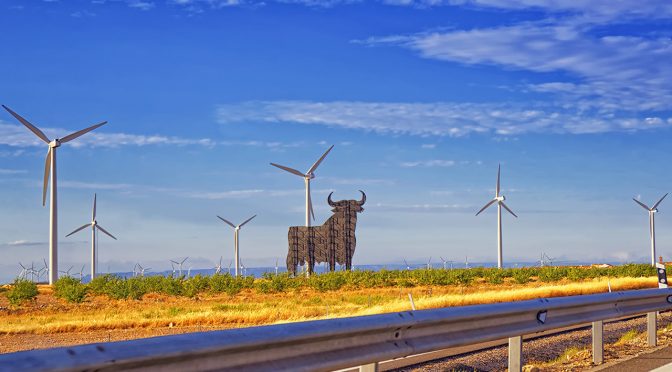Whatever happens in the next three weeks, even if the wind stops blowing abruptly, wind power will end the year as the first source of electricity in Spain. Thus, wind will surpass nuclear power in the national electricity matrix for the first time since 2013, the only year in the entire historical series in which wind turbines were the main generation technology. That year, especially good in terms of wind resources, nuclear power was affected by the closure of the Garoña plant. Since then, however, wind power has not stopped growing either in absolute terms or in relative terms (as a percentage of the total energy generated), a trend that will continue in the near future.
The milestone, advanced this Wednesday by the digital newspaper Nius, is the appetizer of what is to come. “Wind power is going to dominate the Spanish electricity system for a long time,” sums up Francisco Valverde, consultant for Menta Energía. According to the National Integrated Energy and Climate Plan (Pniec), published by the Government last year, the installed power of wind turbines will almost double between now and 2030. In that period, the growth rate of solar photovoltaic will be even higher ( installed power will more than quadruple), to become the second most important source of generation although still far from wind power even if the contribution of solar thermal is added. Installed nuclear power will drop to less than half its current level. And both the combined cycle (the plants fired with natural gas) and the hydraulic will maintain their weight in a mix in which the carbon will disappear completely.
With natural gas prices soaring – in Europe today it costs four times that of last January – and CO? emission rights skyrocketing, two factors that have dragged down the wholesale electricity market – 2021 will be, by far, the most expensive year in history—, wind power is more relevant than ever to lower the electricity bill. The equation is clear: the more the wind turbines and solar panels contribute, the lower the cost for consumers and companies attached to the regulated market, also known as PVPC. The best proof of this maxim was last summer, when, to compensate for the lack of wind, combined cycles had to increase their activity, dragging prices down. Under the current marginalist system, the price of electricity is set by the last megawatt hour that enters the market, which in the last year has been, in many time slots, combined cycles.
Renewables, ever closer to ‘sorpasso’
The increase in wind and solar photovoltaic generation so far in 2021 will also bring the sum of all renewables closer to half of the generation pie: they will contribute, together, about 47%, according to the latest Red update Eléctrica de España (REE) consulted by this newspaper. All, despite the fact that hydraulic generation has been diminished by the lower availability of water in some basins. To put the data in perspective, a decade ago renewables contributed less than a third of the electricity consumed in Spain.
In view of the evolution of recent years and the avalanche of investment in green energy, the sorpasso it should be produced in a few years. How many? “It will depend, to a large extent, on what is going to enter the new auctions [de eólica y de solar] and the hydraulic contribution, which changes everything ”, replies Pedro Linares, a professor at the Universidad Pontificia de Comillas specialized in energy issues. “Today”, Valverde endorses, “what gives money are renewables”. Despite the recent resurgence of nuclear in the public debate, he says, nuclear power is only viable if it is accompanied by “significant subsidies.” “Sometimes it seems that people are not clear about it, but Spain has it all: we have more wind and more sun than practically any European country.”
Natalia Fabra, professor at the Carlos III University of Madrid, completes this idea: “There is one thing that is clear: that the rest of the technologies will not grow and the renewable ones will”. His “impression”, in fact, is that the green energy targets set by Pniec will be met well before 2030. “Technological evolution is only going to help: the costs of investing in renewables and batteries to store surpluses They are not going to stop falling, and that is going to make the process go even faster, ”he says by phone. The great unknown —and the great risk— lies, in his opinion, in the social acceptance of these technologies, with growing protest movements in some areas of Spain against the installation of wind turbines and photovoltaic panels. “It will depend a lot on the policies that are put in place: that the projects contribute more to the local public coffers and that citizens notice a positive change.”


